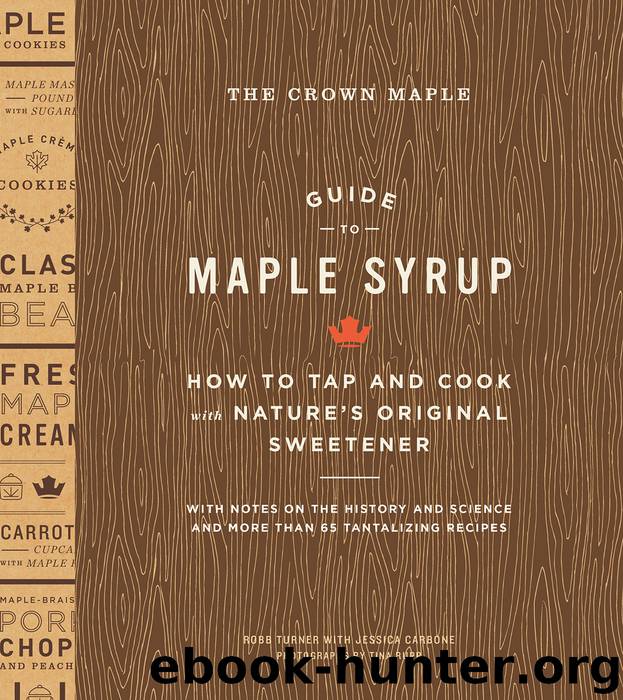The Crown Maple Guide to Maple Syrup by Robb Turner & Jessica Carbone

Author:Robb Turner & Jessica Carbone
Language: eng
Format: epub
Publisher: ABRAMS
Published: 2016-08-02T16:00:00+00:00
THE RIGHT PRICE—AND THE REAL VALUE—FOR QUALITY MAPLE SYRUP
How do you really assess the value of maple syrup, when retail prices can fluctuate so wildly and availability changes from year to year? Pure maple syrup can be sold at a premium, given that it comes from a limited resource and can only be made about six to eight weeks out of the year, but you also have to consider that many consumers are used to picking up the giant $3.99 bottle of imitation maple syrup at the grocery store, and often balk at the small bottles of pure maple selling for upwards of $12.
The price of maple syrup has risen more than 182 percent since 1980.79 Given our ever-changing weather patterns over the last three decades, it’s no surprise that maple prices have changed as well. During the notoriously terrible year of 2012, the nation’s syrup run fell 32 percent short of the previous year’s run. That change in available supply, combined with a strong Canadian dollar, caused American maple prices to increase, especially as retailers made big purchases to create maple syrup “reserves” in anticipation of future shortages. The 2014 run, meanwhile, was one of the best on record, and prices per pound of syrup ranged from $2.65 for Golden and Amber syrup to $2.55 for Dark and $2.50 for Very Dark.80 (By comparison, in 2007 the price per pound was $4 or higher, depending on the state of origin, due to a shortage in supply that drove nationwide prices higher.)
Producers have always had to consider the fair price for their syrup in relation to where that syrup is being sold. A small bottle of your last run can retail for $10 at the farmers’ market without complaint, especially because the people buying it from you probably have a great awareness of the work that went into that $10 bottle. But this local appreciation has also been one of the historical shortcomings of maple, preventing it from gaining a stronger foothold in the sweetener category: The more specialized your audience’s knowledge has to be, the less likely it is you can go mainstream. Maple has always been a regional specialty, a signature northeastern flavor, and this has been very positive in giving it a sustained appreciation in the regional food movement (and the agritourism business). But this does limit the impact that maple producers can have on the national food market, especially when it comes to retail placement.
Download
This site does not store any files on its server. We only index and link to content provided by other sites. Please contact the content providers to delete copyright contents if any and email us, we'll remove relevant links or contents immediately.
| Culinary Biographies | Essays |
| Food Industry | History |
| Reference |
A Court of Wings and Ruin by Sarah J. Maas(7733)
The Death of the Heart by Elizabeth Bowen(3580)
The Sprouting Book by Ann Wigmore(3562)
Better Homes and Gardens New Cookbook by Better Homes & Gardens(3549)
BraveTart by Stella Parks(3417)
Salt, Fat, Acid, Heat: Mastering the Elements of Good Cooking by Nosrat Samin(3122)
Sauces by James Peterson(3071)
Kitchen confidential by Anthony Bourdain(3051)
The Bread Bible by Rose Levy Beranbaum(3040)
Classic by Mary Berry(2979)
Solo Food by Janneke Vreugdenhil(2949)
Ottolenghi - The Cookbook by Yotam Ottolenghi(2898)
Martha Stewart's Baking Handbook by Martha Stewart(2828)
Day by Elie Wiesel(2751)
Betty Crocker's Good and Easy Cook Book by Betty Crocker(2700)
The Plant Paradox by Dr. Steven R. Gundry M.D(2583)
My Pantry by Alice Waters(2581)
The Kitchen Counter Cooking School by Kathleen Flinn(2500)
Hot Sauce Nation by Denver Nicks(2466)
